Software as a Service (SaaS) companies face unique challenges in distinguishing themselves within the crowded digital marketplace. The key to rising above the noise? Strategic, well-crafted content that speaks directly to your target audience while driving measurable results. This comprehensive guide will show you exactly how to master SaaS content writing to fuel sustainable growth for your business, based on proven strategies and backed by current industry data.
What Makes SaaS Content Different? The Industry-Specific Approach
SaaS content writing demands a distinct approach compared to other industries. The software-as-a-service model’s complexity, technical nature, and subscription-based business model create unique content requirements.
Balancing Technical Expertise with Accessibility
The greatest challenge in SaaS content writing lies in the delicate balance between technical accuracy and reader-friendly language. According to Siege Media, 89% of content marketers say blog content is a top priority.
Your content must simultaneously:
- Speak to technical decision-makers who understand APIs and integration capabilities
- Engage non-technical stakeholders concerned with ROI and implementation ease
- Address the needs of end-users focused on usability and problem-solving
This means transforming complex concepts into digestible explanations without oversimplifying or losing technical credibility. Strong SaaS content maintains authority while remaining approachable and educational.
“The best SaaS content doesn’t just explain what a product does. It demonstrates how it solves real problems for real users in language they understand.” Tom Winter, SEOwind
Product Evolution and Continuous Value Demonstration
Unlike physical products, SaaS offerings continuously evolve through updates and new features. Your content strategy must reflect this dynamic nature by:
- Regularly updating existing content to reflect product improvements
- Creating content that emphasizes scalability and growth potential
- Demonstrating ongoing value throughout the customer lifecycle
The SaaS Content Funnel: Mapping Content to the Customer Journey
One critical area missing from many SaaS content strategies is a deliberate approach to different stages of the buyer’s journey. DemandMetric shows that content marketing generates 3x more leads and costs 62% less than outbound marketing, making a well-structured content funnel essential for SaaS success.
Top of Funnel (TOFU): Creating Awareness and Education
At the awareness stage, potential customers may not even realize they have a problem your software solves. Your content should focus on:
- Educational blog posts addressing industry pain points
- Thought leadership articles establishing authority
- Infographics simplifying complex industry concepts
- Informative videos and podcasts introducing topics
The goal is to attract and educate without selling. According to data from Insight Partners’ 2024 SaaS Marketing Benchmarks, SaaS companies that grew their content teams saw their MQL to SQL conversion rate more than triple, demonstrating the effectiveness of strategic content at the awareness stage.
Practical TOFU Example: HubSpot’s “What is Inbound Marketing?” guide stands as an excellent example of top-funnel content. This comprehensive resource educates readers about inbound methodology without pushing their products directly. Instead, it establishes HubSpot as an authority while addressing fundamental marketing concepts relevant to their solution.
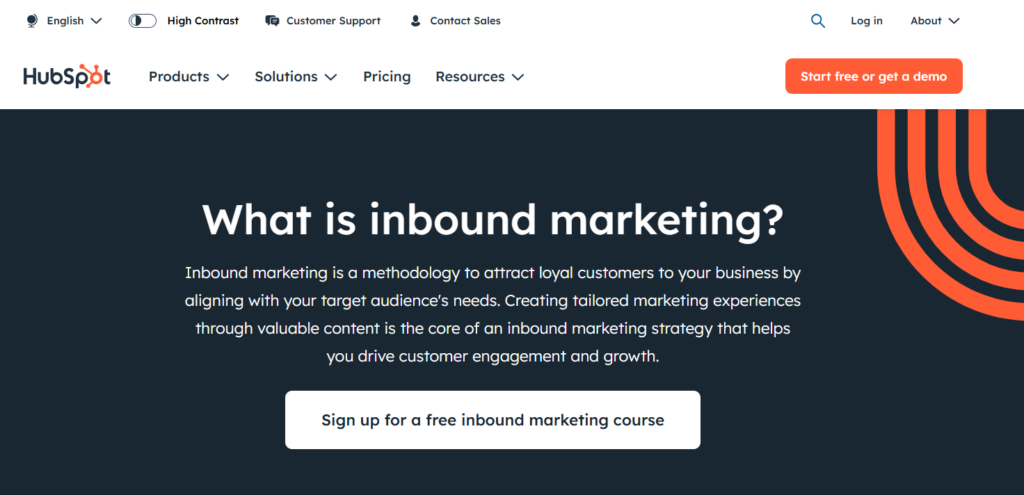
Middle of Funnel (MOFU): Nurturing Consideration
At this stage, prospects understand their challenge and are evaluating potential solutions. Content should shift toward:
- In-depth guides and whitepapers comparing approaches
- Case studies showing real-world applications
- Webinars demonstrating expertise and solution frameworks
- Email nurture campaigns with tailored educational content
This is where the technical aspects of your solution can shine while maintaining focus on value rather than features. As Jason Lemkin, founder of SaaStr, notes: “Middle-funnel content is where you build trust by showing – not telling – how your solution solves specific problems better than alternatives.”
Practical MOFU Example: Semrush’s “SEO Tools Comparison” guide exemplifies effective middle-funnel content by helping prospects evaluate different solutions objectively while subtly highlighting Semrush’s strengths. This type of content directly contributed to their impressive growth, as Semrush reports that 97% of businesses with developed content strategies found some degree of success in their content marketing efforts.
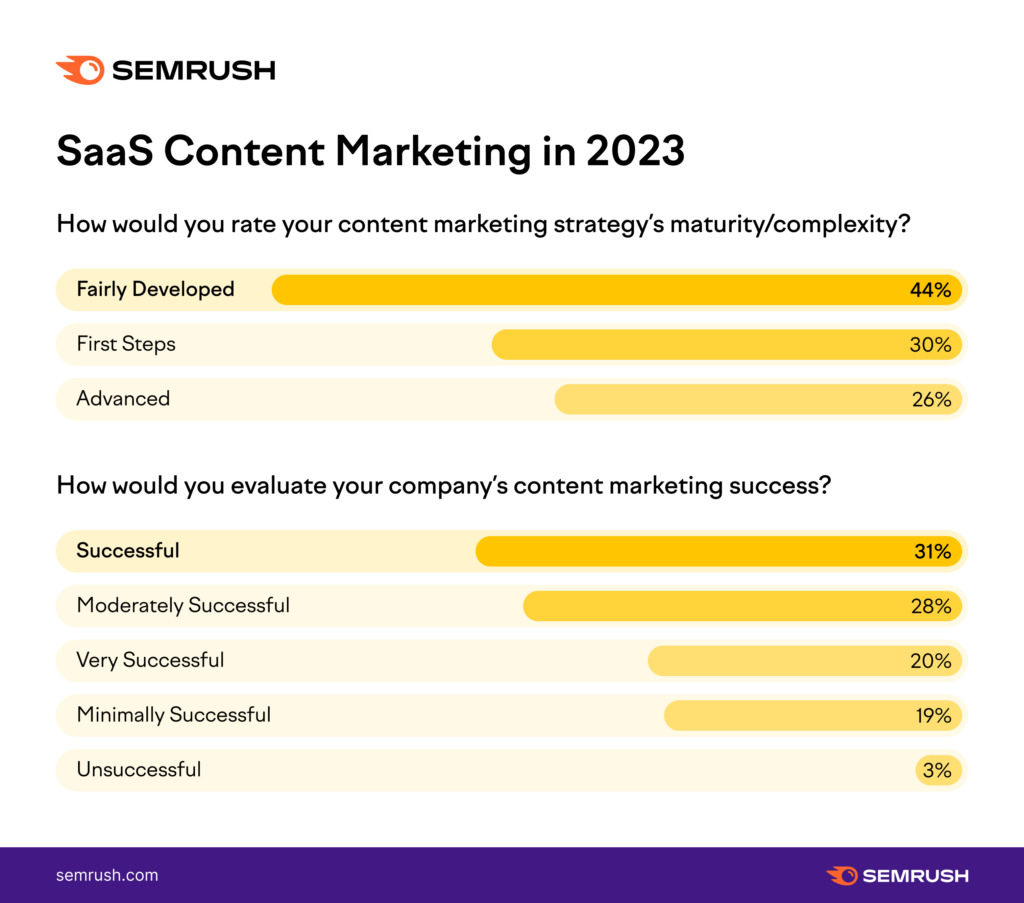
Source: Semrush
Bottom of Funnel (BOFU): Converting Decision-Makers
At the decision stage, prospects need reassurance and specific details to make the final purchase decision:
- Product comparison guides highlighting your advantages
- Free trial offers with structured onboarding content
- Customer testimonials and success stories with metrics
- ROI calculators and pricing explainers
- Technical documentation and integration guides
Content at this stage should minimize risk perception and validate the purchase decision.
Practical BOFU Example: Mailmodo’s interactive ROI calculator demonstrates effective bottom-funnel content by allowing prospects to input their specific values and see potential returns from implementing the solution. This approach has contributed to their success, as companies prioritizing content marketing like Mailmodo have reported up to 434% more indexed pages and 97% more indexed links.
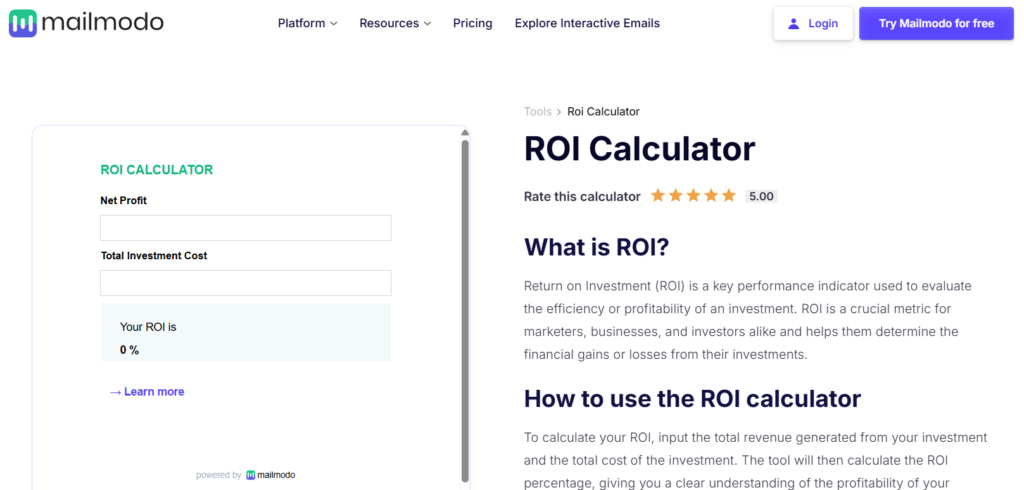
The CyborgMethod™: Balancing AI and Human Expertise for Superior SaaS Content
The CyborgMethod™ represents a balanced approach to SaaS content creation that leverages both AI capabilities and human expertise. This methodology, developed through extensive testing and refinement at SEOwind, isn’t about replacing writers with technology—it’s about creating a systematic process where each enhances the other’s strengths.
The Process: How the CyborgMethod™ Works in Practice
The CyborgMethod™ follows a structured workflow that consistently produces high-quality SaaS content:
- Research Phase: AI tools gather data on keywords, competitor content, and search intent while human experts contribute industry knowledge and customer insights.
- Planning Phase: AI helps organize research into structured content briefs while humans refine the strategy and identify unique angles.
- Content Creation: AI generates initial drafts based on research and briefs, then human experts enhance with real expertise, brand voice, and storytelling elements.
- Refinement: Multiple review cycles where both AI and human inputs improve quality, factual accuracy, and engagement factors.
- Optimization: Technical SEO elements are implemented with AI assistance while maintaining the human-crafted narrative flow.
The effectiveness of this hybrid approach is supported by independent research. According to Semrush’s 2024 Content Marketing Report, 83% of marketers find that high-quality, less frequent content outperforms lower-quality, high-volume content – exactly what the CyborgMethod™ aims to deliver by combining AI efficiency with human quality control.
How SEOwind Streamlines the SaaS Content Creation Process
SEOwind’s platform specifically addresses the unique challenges of creating high-performing SaaS content through its comprehensive, AI-powered workflow.
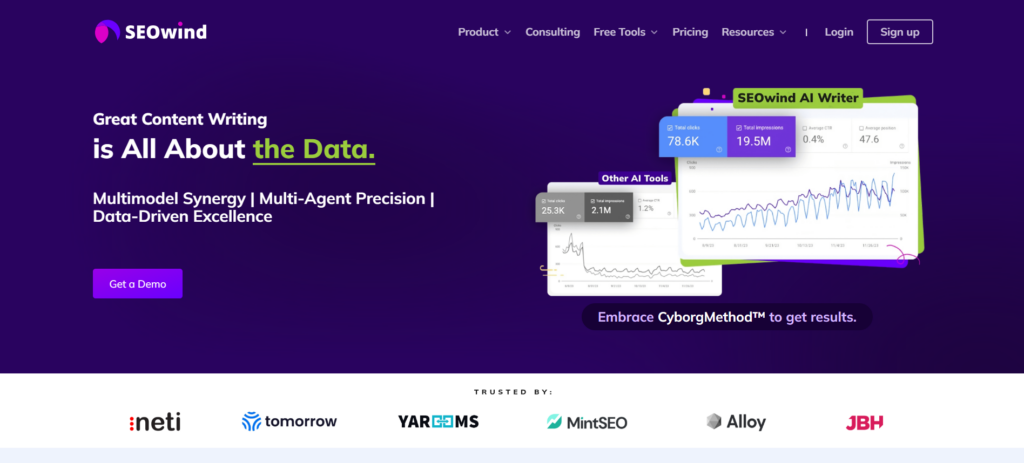
Data-Driven Research and Analysis
SEOwind begins by gathering extensive market data to inform your content strategy:
- Comprehensive keyword analysis identifies high-potential topics
- Competitor content analysis reveals gaps and opportunities
- Search intent analysis ensures content matches user needs at each funnel stage
This research-first approach aligns with what top-performing SaaS companies prioritize.
Brand Voice Integration and Customization
The platform allows you to feed your specific brand voice guidelines, terminology preferences, and company data into the system. This ensures all generated content maintains consistency with your established brand identity while speaking directly to your SaaS audience’s needs.
Structured Brief Creation and Content Development
SEOwind creates comprehensive content briefs based on all gathered data, providing a clear roadmap for high-performing SaaS content:
- Topic and keyword focus with search volume data
- Recommended content structure with H2s and H3s
- Questions to address based on search intent analysis
- Competitor insights and differentiation opportunities
From there, the platform streamlines the writing process itself, allowing for seamless collaboration between AI capabilities and human expertise in line with the CyborgMethod™ approach.
AI Agents and Automated Workflows: SEOwind’s Content Engine
SEOwind isn’t built around a single prompt-and-draft approach. It runs on a structured system of specialized AI agents and automated workflows designed to deliver consistently high-quality SaaS content at scale.
Instead of handing every task to one generalized AI, SEOwind uses dedicated agents, each trained for a specific role in the content lifecycle. This layered approach ensures depth, accuracy, and strategic alignment. Every time.
AI Research Agent
The Research Agent gathers the critical inputs that fuel great content. It pulls data from multiple sources to build a strong, credible foundation, including:
- Statistics and credible quotes from industry leaders
- Thought leadership insights to align content with current conversations
- Case studies that add unique, real-world credibility
- Emerging trends that position your content ahead of competitors
- Insights directly from your website to maintain brand alignment and leverage internal expertise
Rather than relying on surface-level scraping, this agent ensures every piece starts with the kind of research that builds authority and trust.
AI Eval & Refine Agent
Once the initial article draft is created, the Eval & Refine Agent steps in to raise the bar. It:
- Reviews the draft for structural, factual, and SEO weaknesses
- Gathers additional data and insights to strengthen thin sections or arguments
- Rewrites and refines the article to meet E-E-A-T standards (Experience, Expertise, Authoritativeness, and Trustworthiness)
Instead of treating the first draft as the final product, this agent transforms it—improving depth, tightening structure, and enhancing credibility.
Seamless Automation Between Agents
AI agents inside SEOwind don’t work in isolation.
They’re connected through automated workflows that move content from one stage to the next without manual intervention:
- Research flows directly into structured brief creation.
- Drafting is triggered once the brief is finalized.
- Evaluation and refinement are automatically applied after the first draft.
- Human editors receive a polished, strategically structured article for final review.
This system cuts down production time, minimizes errors, and creates a repeatable process that scales without sacrificing quality.
Why It Matters
Without specialized agents and automated workflows, AI writing quickly falls into the trap of generic, error-prone content.
SEOwind’s agent-powered system solves this by ensuring every piece is built on deep research, evaluated critically, and refined to meet the highest content standards.
It’s not just faster content creation. It’s smarter, more strategic SaaS content, built for growth, credibility, and long-term impact.

Advanced Keyword Strategies for SaaS Content Success
Effective keyword targeting is foundational to SaaS content performance..
Mapping Keywords to the Customer Journey
Rather than targeting keywords based solely on volume or difficulty, successful SaaS content strategies map keywords to specific stages of the customer journey:
- Awareness Keywords: Educational terms focused on problems and solutions
- “what is application monitoring”
- “customer churn prevention strategies”
- “project management challenges”
- Consideration Keywords: Solution-comparison and evaluation terms
- “best project management software for enterprise”
- “cloud vs on-premise CRM comparison”
- “[solution type] features to look for”
- Decision Keywords: Brand-specific and purchase-intent terms
- “[brand name] vs [competitor]”
- “[product name] pricing”
- “[solution] demo request”
This deliberate approach ensures your content portfolio addresses the full spectrum of customer needs rather than clustering around a single funnel stage.
Research Techniques for Comprehensive Keyword Coverage
To ensure your SaaS content captures all relevant search traffic, implement these advanced keyword research techniques:
- Competitor Gap Analysis: Identify keywords where competitors rank but your site doesn’t
- Customer Language Mining: Extract terminology from support tickets, reviews, and sales calls
- Forum and Community Monitoring: Track discussions on Reddit, Quora, and industry forums to identify emerging topics
- Feature-Specific Keyword Research: Develop content around specific capabilities and use cases
Mind Rand Fishkin warning: “If Your Marketing Mix Doesn’t Match Your Customer’s Journey… You’re Gonna Have a Bad Time”. For more go here.
Building Authority Through Strategic Content Structures
A well-organized content architecture helps both users and search engines understand your expertise in the SaaS space. Rather than creating isolated blog posts, leading SaaS companies build interconnected content hubs that demonstrate comprehensive subject matter expertise.
Pillar Pages and Topic Clusters: The Foundation of SaaS Content Architecture
The pillar page and topic cluster model creates clear content hierarchies that boost organic visibility while improving user experience:
- Pillar Pages: Comprehensive guides (3,000+ words) covering broad topics relevant to your SaaS offering
- Cluster Content: Supporting articles that explore specific aspects of the main topic in greater depth
- Strategic Interlinking: Clear connections between related content pieces that guide users through your expertise
Creating Information Hubs for Domain Authority
To develop effective information hubs that establish your SaaS brand as an authority:
- Select Core Topics: Choose broad themes directly related to your software’s value proposition
- Develop Comprehensive Pillar Content: Create ultimate guides that address the main questions and subtopics
- Map Supporting Content: Plan cluster articles that dive deeper into specific aspects
- Implement Hub-and-Spoke Linking: Ensure clear pathways between related content
- Regularly Update and Expand: Keep content fresh with new information and insights
This structured approach creates a virtuous cycle where each piece reinforces the others, building cumulative authority over time.
Measuring SaaS Content Performance: Beyond Basic Metrics
A significant gap in many SaaS content strategies is insufficient focus on measurement and ROI tracking. Encouragingly, according to Sixthcity Marketing, 54% of marketers are now systematically measuring content marketing ROI, showing increased rigor in proving content’s value.
Key Performance Indicators for SaaS Content
Effective measurement of SaaS content requires tracking metrics across the entire funnel:
Awareness and Traffic Metrics
- Organic traffic growth (aim for 10%+ month-over-month)
- Search visibility for target keywords
- Social shares and engagement
Engagement and Nurturing Metrics
- Average time on page (benchmark against industry standards)
- Scroll depth and content consumption patterns
- Email signups and resource downloads
- Lead-to-MQL conversion rate (benchmark: 39%)
Conversion and Revenue Metrics
- Content-attributed demo requests or trial signups
- Customer Acquisition Cost (CAC) from content channels
- Lifetime Value to CAC ratio (target: 6:1 for SaaS)
- Content influence on deal velocity and size
“Don’t just measure traffic and rankings. The most valuable metrics for SaaS content are those that demonstrate impact on revenue, Whether that’s pipeline influenced, trials started, or deals accelerated.” Tom Winter, Founder of SEOwind
Attribution Models for Content Marketing
Successful SaaS companies use sophisticated attribution models to track content’s impact throughout the customer journey:
- Multi-Touch Attribution: Credits content touchpoints across the entire customer journey
- Time-Decay Models: Gives more credit to content consumed closer to conversion
- Position-Based Models: Emphasizes first-touch and last-touch content while acknowledging middle interactions
By implementing more sophisticated attribution, you can identify which content types and topics most effectively drive business outcomes at each funnel stage.
Case Studies: Real-World SaaS Content Success Stories
Let’s examine how specific SaaS companies have leveraged content marketing to drive measurable business results:
HubSpot: Educational Content Driving Sustainable Growth
Strategy: HubSpot has built an extensive library of educational content targeting all stages of the buyer journey, focusing on aligning content with business goals. They regularly update existing content to maintain search visibility and relevance, recognizing that content also builds trust for the prospects who are not in the market right now.
- Attributes success to robust content strategy
- Consistently delivers long-term value and lead generation
- Maintains market leadership position despite increased competition
Semrush: SEO-Driven Content Dominance
Strategy: Semrush prioritizes SEO-driven content, investing heavily in blogs and resource pages to dominate organic search results. They use data-led reporting and research-heavy articles to attract marketers and business owners, further amplifying their brand through webinars and expert interviews.
Mailmodo: Multi-Channel Content Approach
Strategy: Mailmodo adopted a multi-channel content approach, integrating educational blogs, downloadable resources, and an engaging newsletter strategy. Their content aligns tightly with SEO best practices, and they frequently update and repurpose existing assets for maximum impact.
The Future of SaaS Content: Emerging Trends and Adaptations
To stay ahead in the rapidly evolving SaaS content landscape, forward-thinking companies are already adapting to emerging trends:
AI-Enhanced Personalization
According to 2024 Semrush data, 68% of businesses attribute increased ROI in content marketing to AI integration. Leading SaaS companies are using AI to:
- Create dynamic content that adapts to individual user behavior
- Develop personalized resource recommendations based on engagement history
- Implement intelligent content delivery systems across the customer journey
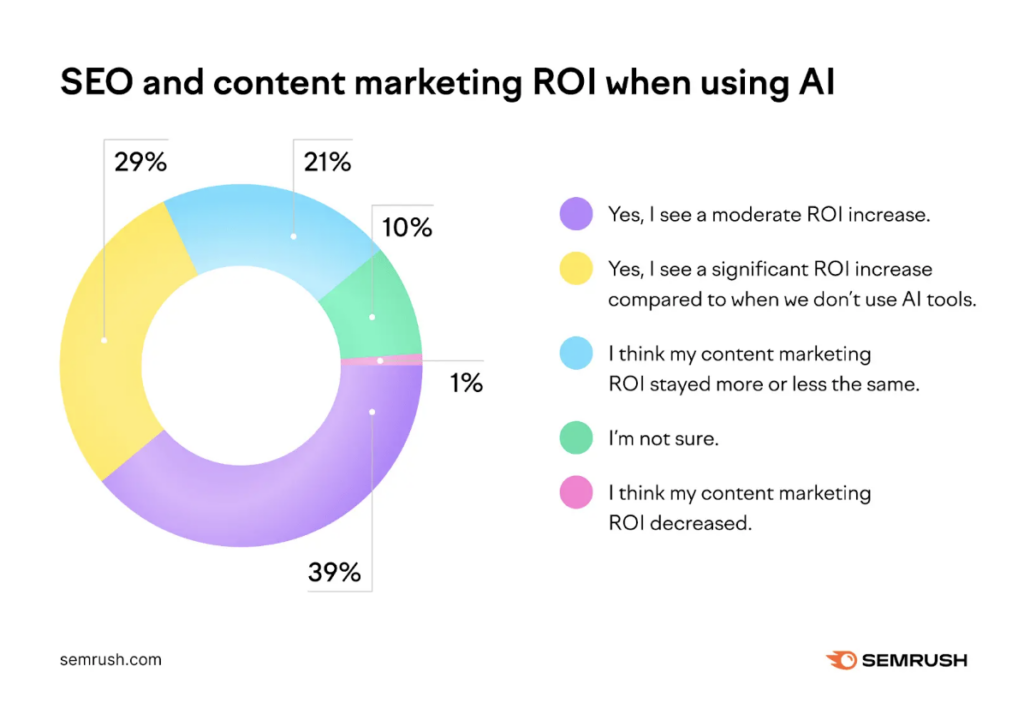
Video and Interactive Content Formats
The latest HubSpoyt research shows that 29% of marketers use short-form video and 21% claim that they have the highest ROI. SaaS companies are leveraging:
- Product walkthrough videos and tutorials
- Expert interview series and thought leadership content
- Interactive demonstrations that allow users to experience value pre-purchase
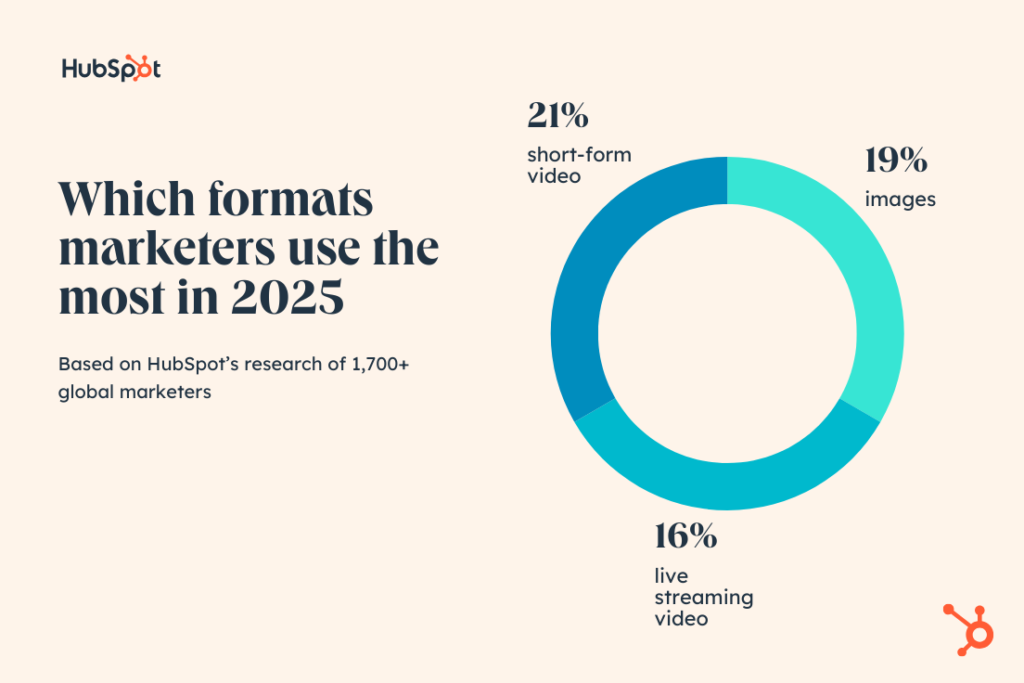
Content-Driven Community Building
Forward-thinking SaaS brands are moving beyond traditional content marketing to build engaged communities:
- Customer education programs that foster loyalty and advocacy
- User-generated content initiatives that showcase real implementations
- Industry-specific discussion forums and knowledge sharing platforms
Getting Started: Implementing Your SaaS Content Strategy
Ready to elevate your SaaS content marketing? Here are specific, actionable steps to get started immediately:
- Audit Your Current Content: Evaluate existing content against the funnel stages. Identify gaps and opportunities using a content inventory spreadsheet that maps each piece to specific journey stages.
- Develop Buyer Personas: Create detailed profiles of your target audience segments, including their challenges, questions, and information needs at each stage of the buying process.
- Build Your Content Calendar: Plan a balanced mix of content types and topics that address all funnel stages. Start with 2-3 pieces for each stage to create a foundation.
- Implement a Measurement Framework: Set up tracking for key metrics mentioned in the measurement section. Tools like Google Analytics 4 and HubSpot can help attribute content touchpoints to conversions.
- Start Small and Scale: Begin with one comprehensive pillar page on your core solution area, then develop 5-7 supporting cluster articles over the next 3 months.
- Develop a Distribution Plan: Identify channels where your audience consumes content. Create a systematic process for promoting each new piece across appropriate channels.
- Establish an Updating Schedule: Set calendar reminders to review and refresh your highest-performing content pieces every 6 months to maintain relevance and search position.
As April Dunford, positioning expert and author, advises the most important first step is understanding exactly who your content serves and what unique value you bring to them. Everything else flows from that clarity.
Key Takeaways
Mastering content writing for SaaS growth requires a strategic, data-driven approach that balances technical expertise with engaging storytelling. The most successful SaaS content strategies incorporate:
- A structured content funnel that addresses TOFU, MOFU, and BOFU stages with appropriate content types
- A balanced hybrid approach that blends AI efficiency with human expertise and creativity
- Advanced keyword targeting mapped to specific customer journey stages
- Comprehensive measurement frameworks that track content performance across the funnel
- Regular optimization based on performance data and emerging trends
The data speaks for itself: content marketing generates 3x more leads and costs 62% less than outbound marketing, with SaaS businesses seeing some of the highest returns due to the educational nature of the software purchase process.
By implementing these approaches and using tools like SEOwind to streamline the process, your SaaS company can create content that not only ranks well but drives measurable business outcomes. Start with the actionable steps outlined above, and watch your content become one of your most powerful growth engines.


